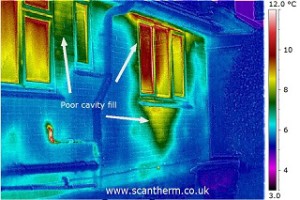From Lizzie Weakly: How Smart Technology Can Make Your Home More Energy Efficient

1. Smart Thermostat
Traditionally, people had to actually walk to their thermostat to turn the heat or air conditioning up and down. Programmable thermostats were later introduced, but most people avoided actually programming them due to how difficult it was to tinker with the settings with multiple tiny buttons and a very tiny and hard to read display.
Those are no longer issues, however, thanks to the introduction of smart thermostats. A smart thermostat is connected directly to a Wi-Fi internet connection. What this means is that you can alter settings and program your thermostat from a smart phone app. Programming with an app is extremely easy. It can also allow you to conserve energy by programming the thermostat to only run when it’s actually needed. You won’t be wasting energy because you forgot to turn down the heat or air conditioning after leaving for work.
2. Smart Lighting
Another integral part of smart home systems is the lighting. Like with a smart thermostat, a smart home has its lighting connected to a control system that is connected to a Wi-Fi connection. With your smart home app, you can alter the settings of your home’s lighting at your own leisure from anywhere in the world you can connect to the internet with your phone or tablet.
If you want to make your home greener, this is a significant advantage. You can check the app to see what lights are on in your house when you’re gone. If you forgot to turn off the lights in a certain room, you can tell the app to turn them off for you. You can also use it to enforce bed times with your children. There are numerous applications.
3. Motion Sensors
Another thing that can make your smart home energy efficient is integrating motion sensors into different rooms. This will insure that electricity is only being spent when people are actually using a room. Lighting, appliances, heating and more will only switch on after the motion sensor has been triggered. When there has been no motion in a room for a long enough period of time, the electricity will be switched off. This can slash energy costs by as much as 50 percent.
4. Smart Irrigation System
Making your home green doesn’t mean only cutting down your energy use. It also means using water more efficiently. You can accomplish this through the use of a smart irrigation system with your smart home. This connects your sprinkler system to your smart home app. You can choose when to run or not run the sprinkler system. You can also program it so it only runs under certain weather conditions. If it just rained, for example, the sprinkler system will not run.
5. Smart Plumbing
Your smart home can also be set up to track how much water your home uses. If you find that you are spending too much time in the shower or running the washing machine too often, you can make adjustments to improve your home’s water efficiency. Using less hot water in your home will also do the job of lowering your energy bills significantly.
Overall, a smart home gives you much more control over what happens in your home. If you wish, you can certainly set up your smart home to greatly decrease its impact on the environment.
